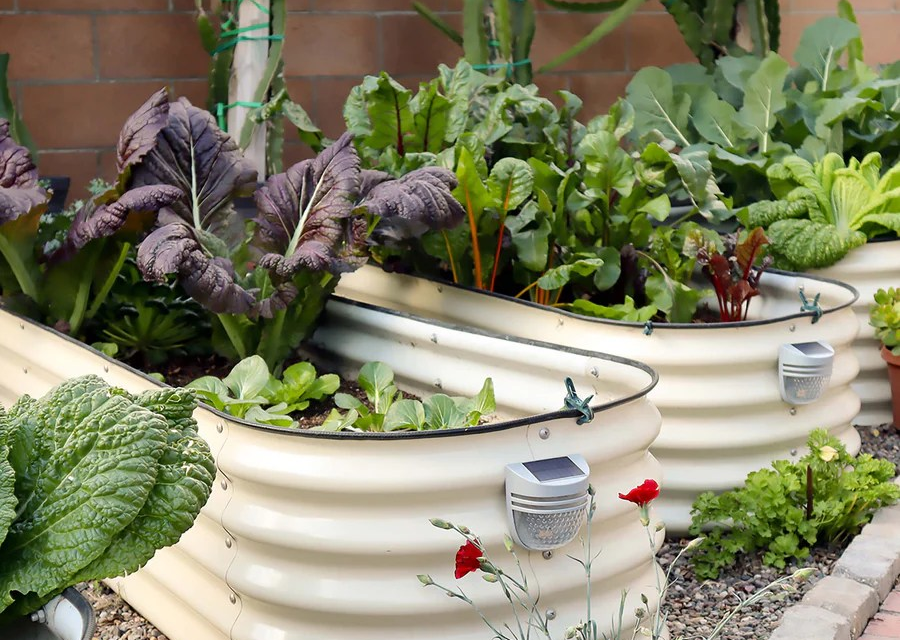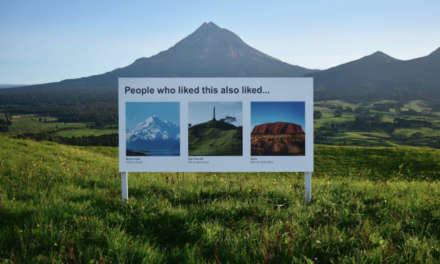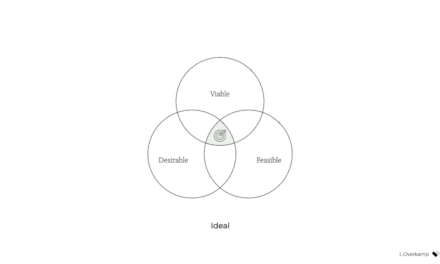Feeling lucky? According to the cosmos, you should be!
Whether you were born with an instinctual green thumb or have had “get into gardening” on your New Year’s Resolutions list annually without ever getting around to your local Home Depot for supplies, there’s something magical about watching a seed sprout into a plant and knowing you helped make it happen. Similar to other hobbies, gardening can be made simpler when you cultivate the proper setup. Using raised beds, for example, offers improved soil drainage, easier weed control, and ease of access to your plants, among other advantages.
That’s why we tapped Nick Cutsumpas, AKA, Farmer Nick, a gardener, landscaper, and “plantrepreneur” who knows choosing the right raised bed can make all the difference in your garden’s success. Below, Cutsumpas offers advice on raised beds based on environment, living space, and more; plus his personal the best ones to shop.
Best raised garden beds, at a glance:
- Best metal: Vego Garden 9 In 1 Modular Metal Raised Garden Bed Kit, $190
- Best wood: Gardener’s Supply Company Deep Root Cedar Raised Beds, $270
- Best splurge: Eartheasy Deer Proof Cedar Complete Raised Garden Bed Kit, $2,125
- Best for small spaces: Lettuce Grow Small Outdoor Farmstand, $574
- Best tiered: Goplus Gray Plastic Raised Garden Bed, $95
- Best aesthetic: Williams Sonoma Raised Garden Planter in Moss Green, $300
- Best for herbs: VegTrug Herb Garden, $120
What to look for when shopping for raised beds
There’s no one-size-fits-all answer to finding the best raised beds for your garden. It’s important to consider the setting in which you’ll be gardening and what your end goal is. How much space do you have? What’s the climate like? Are you looking to invest in a piece that you’ll have forever? What kind of plants do you plan on growing? Of course, aesthetics matter when adding a new structure to your backyard, but when buying raised beds Cutsumpas notes that “the most important thing you should evaluate is the material.”
Material
Although a wood finish looks more natural, it won’t last forever; especially in humid climates where “they’ll degrade faster than in dry environments.” However, if you do live somewhere that doesn’t experience muggy summer days as often, lumber options like “cedar and redwood are naturally rot resistant” for the gardener who favors an organic approach and is fine with needing to replace their garden set up in a few years. Nonetheless, If functionality is at the forefront of your raised bed wishlist, “metal beds will last for much longer,” and with the recent cost increase of lumber the two materials price out to a similar amount.
Size and shape
In addition to material, the size and shape of your raised bed are critical factors to consider because with more space comes more maintenance and work. If you have the square footage available in your yard to run with a large bed, so be it, but Cutsumpas says new gardeners will be “amazed at how many plants can fit in a standard three-foot-by-six-foot bed” for those who are working with a small apartment balcony, or simply don’t want to bite off more than they can chew. The shape of your beds is an important, yet usually underrated, element to consider but choosing dimensions that “allow you to reach all areas of the bed and allow for proper walkways between them” make for a more functional garden overall.
Drainage
Stagnant water pooling around your precious plants can drown their roots and attract pesky pests and diseases, which is why you should opt for raised beds with proper drainage. Some materials, like cedar, are naturally rot-resistant and allow excess moisture to drain away more effectively than other types of wood. If you opt for a metal or plastic raised bed, however, you’ll want to make sure they have proper (and effective) drainage holes to give water somewhere to go.
Shop 7 raised beds for all types of gardeners
A modern take on a classic raised bed, Vego Garden marries longevity and modernity with its raised bed that comes in an array of stunning color finishes while promising a 20+ year lifespan. The mid-shin height gives easy, quick access to your garden while keeping pests at bay. Each bed is completely modular, allowing you to choose from nine different configurations depending on your needs, and easy to set up. The weather-resistant recyclable metal and food-safe materials are huge wins, too. Plus, the monochrome raised bed setup looks gorgeous in any garden.
Dimensions: 17” tall, customizable length
Materials: VZ 2.0 material made from a steel substrate coated in zinc, aluminum, & magnesium + USDA-certified paint
Pros:
- 7 modern color options
- Quick, customizable assembly
- Made from recyclable and food-safe materials
- 20+ year lifespan
- Compatible with add-ons and accessories
Cons:
- No liner included
- Difficult to store during the off-season
Cutsumpas’ favorite choice within his own garden is this cedar bed from Gardener’s Supply Company. The brand’s mission is one to get behind; “It’s a B-corp, employee-owned company that makes some of the most high-quality garden products out there, and its beds come in all shapes, sizes, and materials,” he says.
At 14-inches deep, these beds are perfect for deep-rooted veggies and shallow herbs alike. As for durability, the cedar is naturally rot-resistant, while the aluminum corners are designed to withstand weather and corrosion over time. Quick and easy to set up, these planters are sure to look good and produce even better- looking harvests, season after season.
Dimensions: 4’ x 4’ x 14”
Materials: Cedar panels, aluminum corners
Pros:
- Made in the USA
- Weather resistant materials
- Quick, customizable set up
- Versatile
Cons:
- Expensive
- Free shipping is not offered
Offering multiple beds in one, this expansive setup is a one-stop shop for creating the garden of your dreams. The deep, 20-inch beds throughout this kit retain more moisture than shorter beds and open up the possibility of growing larger plants, without swamping out the roots, of course. Intentional details like wheelchair accessibility, an optional automatic watering system, and a fence that doubles as a trellis make this kit worth the price tag.
Dimensions: 12’ x 8’
Materials: Cedar
Pros:
- All-in-one set up
- The fence keeps pests out
- Automatic watering system
- Thoughtful, intentional features
- Spacious, extra deep beds for larger plants
Cons:
- Longer assembly time
- Pricier option
- Requires large space
<!– –>
If you’re lacking the space for a traditional raised bed, Cutsumpas recommends trying hydroponic plants, which grow in water as opposed to soil. This upright farmstand can grow 18-36 plants (depending on the size you choose) simultaneously in a fraction of the space, using a fraction of the water. Cutsumpas has his Lettuce Grow situated right next to his raised beds outside, yet still close to his kitchen, to make the fresh herbs and leafy greens it produces extra accessible.
Dimensions: 4’3″ x 22″
Materials: BPA-free, food-grade plastic
Pros:
- Small (renter-friendly) footprint and modular design
- Uses less water than traditional beds
- Self-watering and self-fertilizing
- Can hold 18-36 plants, depending on the size you choose (S, M, L)
- Connects with app
Cons:
- Requires Lettuce Grow’s special seed pods
- Expensive
This free-standing tiered planter may occupy a small space, but it produces big results. All plants are placed in a staggered formation to ensure that they get enough sunlight and water despite which plastic bed they’re placed in on the structure. Each bed is also removable, making it easy to give them individual TLC or move things around as needed.
Dimensions: 27” x 22.5” x 45”
Materials: Iron, polypropylene
Pros:
- Compact size
- Affordable
- Removable beds for easy access
- Stepped drainage system
- Versatile
Cons:
- Some gardeners might not be a fan of plastic beds
- Small surface area in each bed
Maybe the most Instagrammable raised bed we could find, Williams Sonoma is giving us the same vibes that Dakota Johnson’s infamous green kitchen did when it hit the internet in 2020. A lower shelf provides storage space for other watering cans, compost, and other gardening tools, and the bed itself conveniently folds flat for compact storage during the off-season. Best of all, the extra raised height prevents bending and kneeling, giving knees and backs a much-needed break.
Dimensions: 47″ x 22 3/4″ x 30 1/2″
Materials: Pre-galvanized steel with weather-resistant, powder-coat finish
Pros:
- Aesthetic design
- Foldable for easy storage
- Extra tall height
- No tools are required for assembly
- Storage rack for accessories
Cons:
- Drainage isn’t great
<!– –>
Made from durable cedar wood, this herb bed is ideal for dryer climates, according to Cutsumpas. Eight separate pockets make keeping your herbs separated a breeze, and each one is outfitted with a pre-formed liner that safely biodegrades over time. It’s available in two finishes; the gray wash blends in with stone patios seamlessly, while the natural finish option is more favorable for those with a garden rooted in nature.
Dimensions: 22” x 30” x 31.5”
Materials: Cedar
Pros:
- Shelf for storing other garden tools
- Extra tall height eliminates bending
- 8 separate plant pockets
- Two color finishes
- Biodegradable liner
Cons:
- Pricey shipping fee
FAQS
What type of soil should I use in a raised bed?
Opt for a premium organic mix brimming with nutrient-rich goodness to kickstart your raised bed journey on the right foot. Look for blends specifically formulated for raised beds, offering the perfect balance of aeration, drainage, and moisture retention—essential ingredients for a thriving garden oasis. Look for a well-rounded mix teeming with compost, peat moss, and vermiculite or perlite for optimal soil structure and fertility.
What grows best in a raised bed?
Flowers, herbs, veggies all do well in a raised bed, but be sure to do your homework before you plant them. Some vegetables might have longer root systems that require more space. Others like to take over and grow wildly, especially herbs like mint, so it’s best to plant them separately.
Recommended Story For You :

The alpine secret for healthy weight loss

The Most Potent Fast-Acting Formula For Incinerating Stubborn Fat

Real Cortexi Users Real Life‑Changing Results

This Cold Drink Might Trigger Your Prostate

Red Boost is a powerful new formula for boosting male sexual health.

Everything you eat or drink eventually reaches your liver for processing.

Brand New Probiotics Specially Designed For The Health Of Your Teeth And Gums

Empowering You to Take Control of Your Blood Sugar Health!

Scientists Finally Discover the Root Cause of Belly Fat and Unexplained Weight Gain






